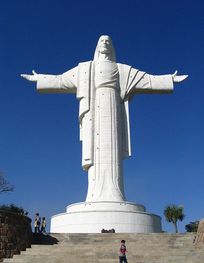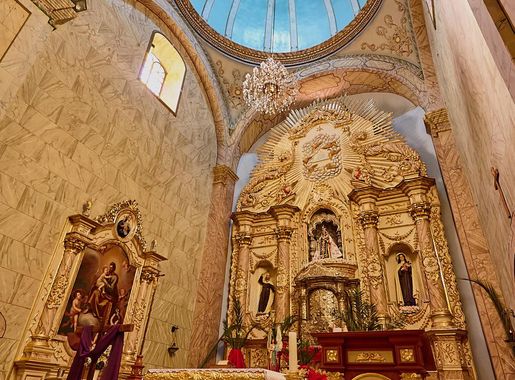
Cochabamba: The Heart of Bolivia
Discover Cochabamba: Bolivia's vibrant city of eternal spring, rich in history, nature, and culinary delights.
Nestled in the Andean valley, Cochabamba is known as the 'City of Eternal Spring' due to its temperate climate and lush landscapes. As the fourth-largest city in Bolivia, it offers a vibrant mix of culture, history, and natural beauty that captivates every visitor. Cochabamba's historic center is a treasure trove of colonial architecture, with its charming plazas and bustling markets. The city's main square, Plaza 14 de Septiembre, is a perfect starting point for exploring, surrounded by landmarks like the Cathedral and the Palacio Portales. Don't miss a visit to La Cancha, one of South America's largest open-air markets, where you can find everything from fresh produce to traditional crafts. For nature lovers, the surrounding mountains and valleys provide ample opportunities for hiking and adventure. The Tunari National Park offers breathtaking views and trails that range from easy walks to challenging climbs. At the park's peak, you can enjoy panoramic vistas of the city and beyond. Additionally, the nearby Incachaca Waterfalls and Pairumani Park are perfect spots for a day trip to relax and enjoy the natural beauty. Cochabamba is also a culinary delight. Known as Bolivia's food capital, the city boasts a variety of traditional dishes that reflect its rich agricultural heritage. Be sure to try local specialties like silpancho, pique macho, and chicharrón. The city's vibrant nightlife and numerous festivals, including the famous Carnaval de Cochabamba, ensure there's always something exciting happening. Whether you're interested in history, nature, or cuisine, Cochabamba offers a rich and diverse experience that is sure to leave a lasting impression.
Local tips in Cochabamba
- Visit La Cancha early in the morning to avoid the crowds and get the best picks of fresh produce and crafts.
- Carry cash, as many local vendors and markets do not accept credit cards.
- Try to learn a few phrases in Spanish; it will enhance your interaction with locals and make your experience more enjoyable.
- Wear comfortable shoes for exploring, as many streets in the historic center are cobbled.
- Be mindful of the altitude; stay hydrated and take it easy on your first day to acclimatize.
Neighbourhoods in Cochabamba
Cochabamba: The Heart of Bolivia
Nestled in the Andean valley, Cochabamba is known as the 'City of Eternal Spring' due to its temperate climate and lush landscapes. As the fourth-largest city in Bolivia, it offers a vibrant mix of culture, history, and natural beauty that captivates every visitor. Cochabamba's historic center is a treasure trove of colonial architecture, with its charming plazas and bustling markets. The city's main square, Plaza 14 de Septiembre, is a perfect starting point for exploring, surrounded by landmarks like the Cathedral and the Palacio Portales. Don't miss a visit to La Cancha, one of South America's largest open-air markets, where you can find everything from fresh produce to traditional crafts. For nature lovers, the surrounding mountains and valleys provide ample opportunities for hiking and adventure. The Tunari National Park offers breathtaking views and trails that range from easy walks to challenging climbs. At the park's peak, you can enjoy panoramic vistas of the city and beyond. Additionally, the nearby Incachaca Waterfalls and Pairumani Park are perfect spots for a day trip to relax and enjoy the natural beauty. Cochabamba is also a culinary delight. Known as Bolivia's food capital, the city boasts a variety of traditional dishes that reflect its rich agricultural heritage. Be sure to try local specialties like silpancho, pique macho, and chicharrón. The city's vibrant nightlife and numerous festivals, including the famous Carnaval de Cochabamba, ensure there's always something exciting happening. Whether you're interested in history, nature, or cuisine, Cochabamba offers a rich and diverse experience that is sure to leave a lasting impression.
When is the best time to go to Cochabamba?
Iconic landmarks you can’t miss
September 14 Square
Explore September 14 Square in Cochabamba, a vibrant park surrounded by colonial architecture and palm trees, perfect for relaxation and cultural experiences.
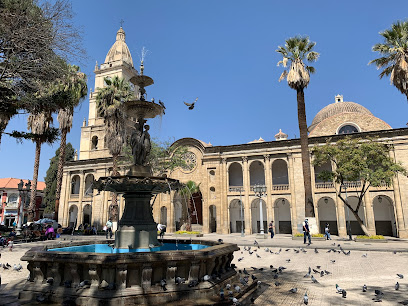
Colon Square
Explore Colon Square, a vibrant city park in Cochabamba, where history, culture, and nature beautifully converge.
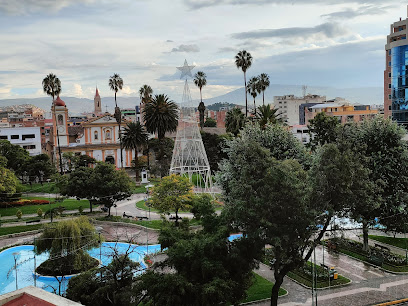
Familia Park
Discover the natural beauty and vibrant atmosphere of Familia Park in Cochabamba, a perfect retreat for families and nature lovers alike.

Paseo El Prado
Experience the charm of Paseo El Prado in Cochabamba, a lush park perfect for relaxation, cultural events, and enjoying the beauty of Bolivia.
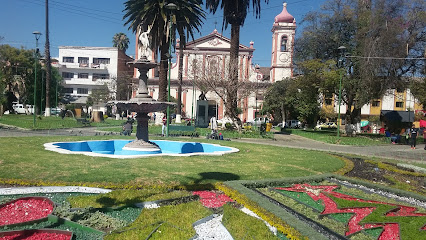
Casa de Campo
Discover the authentic flavors of Bolivia at Casa de Campo, a charming South American restaurant in Cochabamba offering a delightful culinary experience.
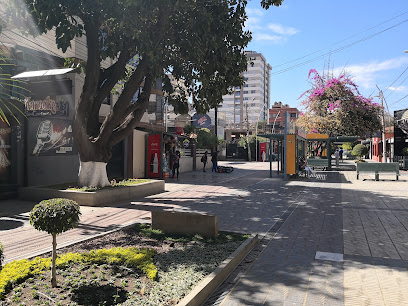
Plazuela Corazonistas / Guzman Quiton
Discover the vibrant Plazuela Corazonistas in Cochabamba, a picturesque plaza filled with culture, local cuisine, and lively atmosphere.
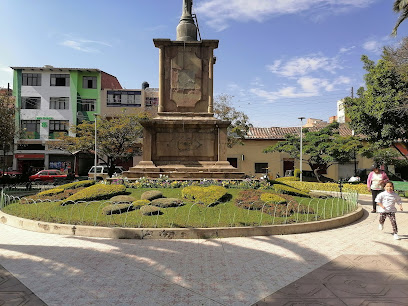
Prehistorico Sacaba Park
Discover the captivating blend of nature and prehistoric art at Prehistorico Sacaba Park in Bolivia, where history meets tranquility.
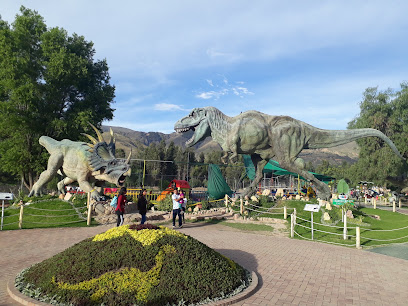
La Cancha
Discover La Cancha, Cochabamba's vibrant market, where local culture, delicious street food, and unique crafts come together in a colorful tapestry of Bolivian life.
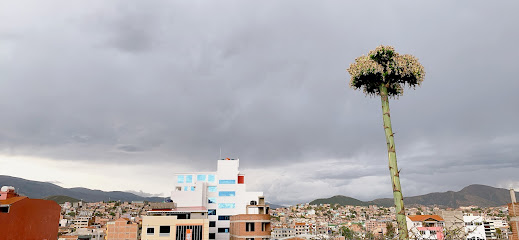
Flags Plaza
Discover the cultural vibrancy of Cochabamba at Flags Plaza, where tradition meets community in a lush, picturesque setting.
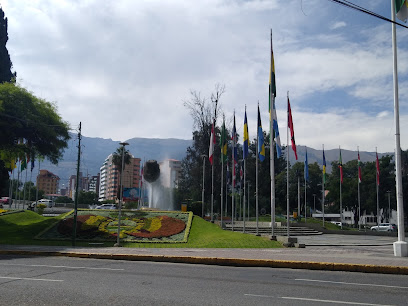
Cayenna Restaurant
Discover the flavors of Bolivia at Cayenna Restaurant, where traditional dishes meet modern culinary artistry in a warm, inviting setting.
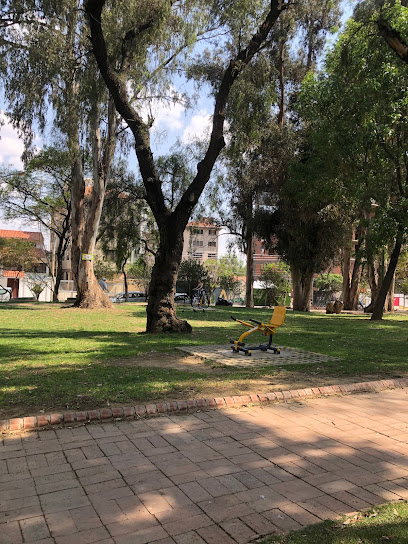
Palacio Portales
Discover the architectural beauty and cultural depth of Palacio Portales, a premier attraction in Cochabamba, Bolivia.
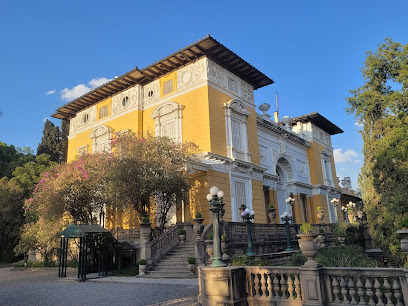
Trópico de Cochabamba
Discover the cultural and historical essence of Cochabamba at Trópico de Cochabamba, where nature meets heritage in a serene park setting.
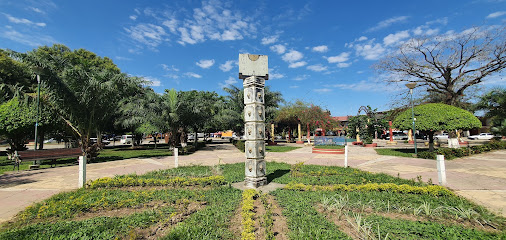
Jardines Del Cerro Hotel Boutique
Discover your serene escape at Jardines Del Cerro Hotel Boutique in Cochabamba, where comfort meets Bolivian charm.

KALOMAI URUBO PARK
Experience the vibrant culture and social life at Kalomai Urubo Park, a hidden gem in Cochabamba perfect for relaxation and local engagement.

Casa Villa Albina
Explore Casa Villa Albina, a captivating heritage site in Cochabamba, showcasing Bolivia's rich history and stunning architectural beauty.

Unmissable attractions to see
September 14 Square
Discover the vibrant atmosphere of September 14 Square, Cochabamba's cultural heart, filled with history, gardens, and lively local life.
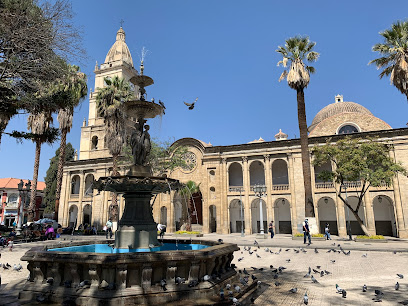
Familia Park
Explore the lush landscapes and family-friendly atmosphere of Familia Park, a tranquil retreat in the heart of Cochabamba, Bolivia.
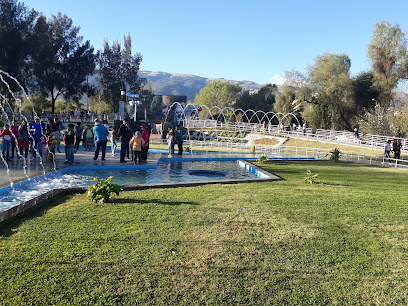
Cristo de la Concordia
Discover the iconic Cristo de la Concordia in Cochabamba, a towering statue symbolizing peace, offering stunning views and a spiritual experience.
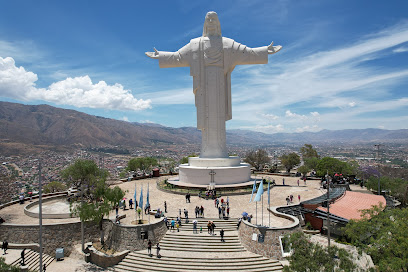
Lincoln Park
Explore the natural beauty and vibrant atmosphere of Lincoln Park, a serene oasis in the heart of Cochabamba, perfect for relaxation and recreation.
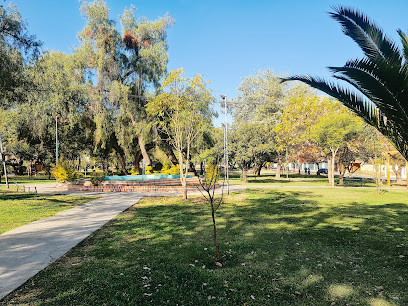
Paseo El Prado
Explore the lush beauty and cultural vibrancy of Paseo El Prado, the heart of Cochabamba's recreational life and a haven for relaxation.
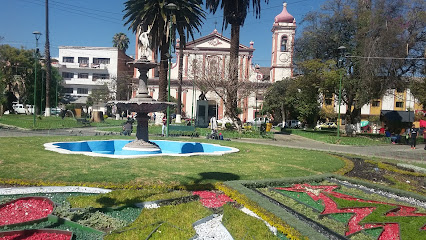
Parque Mariscal Santa Cruz
Explore the lush landscapes of Parque Mariscal Santa Cruz, a serene urban park in Cochabamba, Bolivia, perfect for relaxation and cultural experiences.
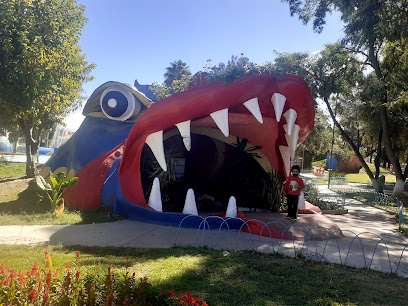
Plazuela Corazonistas / Guzman Quiton
Explore the vibrant Plazuela Corazonistas in Cochabamba, a cultural oasis filled with greenery, art, and local traditions.
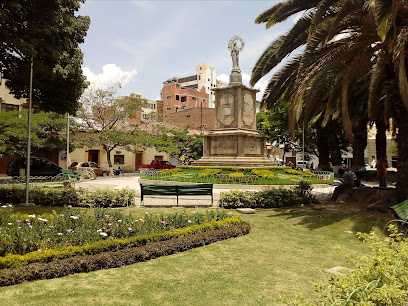
Parque de Educación Vial
Explore the unique Parque de Educación Vial in Cochabamba, Bolivia, a captivating park dedicated to road safety education and family fun.

Prehistorico Sacaba Park
Discover the prehistoric wonders at Prehistorico Sacaba Park, a unique family-friendly attraction in Bolivia featuring life-sized dinosaur replicas and beautiful natural scenery.
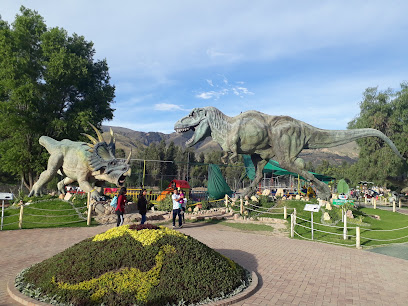
Ecoturistico Pairumani Park
Explore the breathtaking landscapes and rich biodiversity of Ecoturistico Pairumani Park in Combuyo, Bolivia, a true ecological paradise.
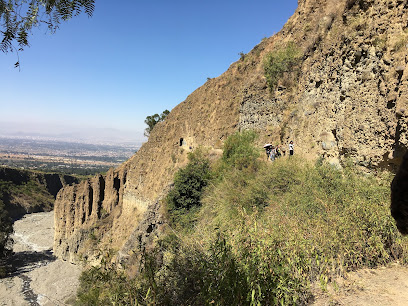
Parque de Aves Agroflori
Discover the breathtaking avian diversity and lush landscapes of Parque de Aves Agroflori in Quillacollo, a must-visit natural sanctuary for all travelers.
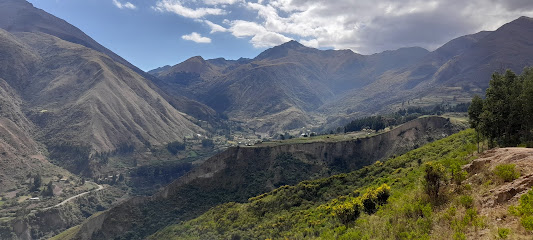
Plaza de las Sirenas
Explore the artistic charm and natural beauty of Plaza de las Sirenas in Quillacollo, a perfect blend of relaxation and cultural experiences.
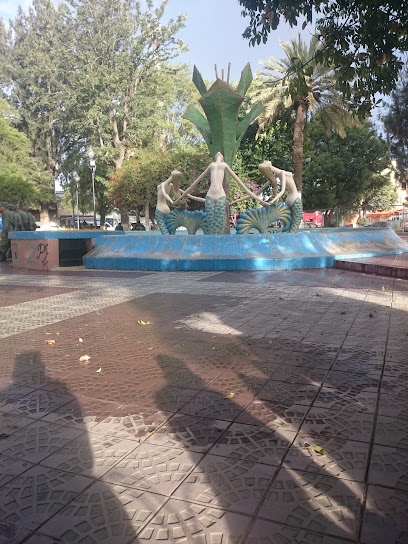
El Pulpo Park
Experience the tranquility of El Pulpo Park, a lush green oasis in Cochabamba, perfect for relaxation, picnics, and family fun amidst nature's beauty.
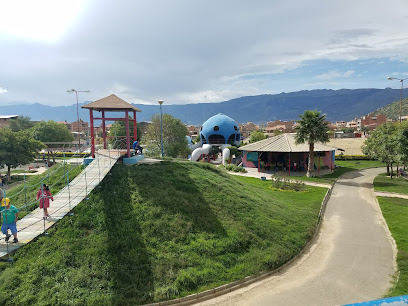
Tobogán Park
Discover the lush landscapes and thrilling attractions of Tobogán Park, a must-visit destination in Cochabamba for nature lovers and adventure seekers.

Plazuela Franz Tamayo
Discover the tranquil beauty of Plazuela Franz Tamayo in Cochabamba, a charming park perfect for relaxation, art, and local culture.
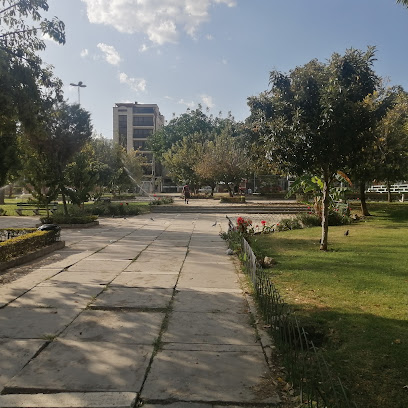
Essential places to dine
Casa de Campo
Experience authentic Bolivian cuisine at Casa de Campo in Cochabamba – where tradition meets flavor in a vibrant setting.
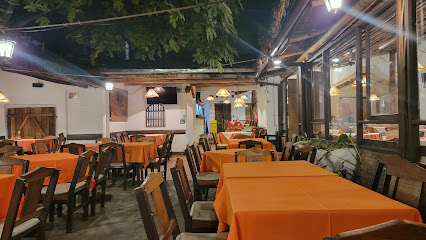
Paprika
Experience exquisite dining at Paprika in Cochabamba – where local flavors meet international cuisine in a vibrant setting.
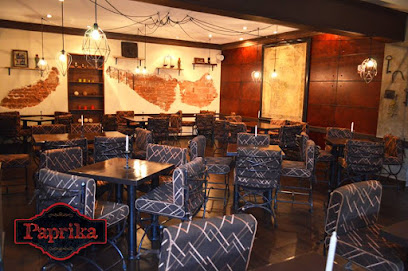
Cayenna Restaurant
Discover the exquisite flavors of Bolivia at Cayenna Restaurant in Cochabamba – where tradition meets innovation.
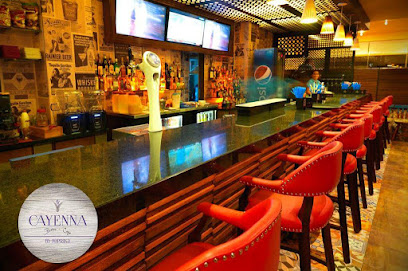
Muela del Diablo
Experience Bolivian flavors at Muela del Diablo - a must-visit grill and bar in Cochabamba offering vibrant dishes and lively ambiance.
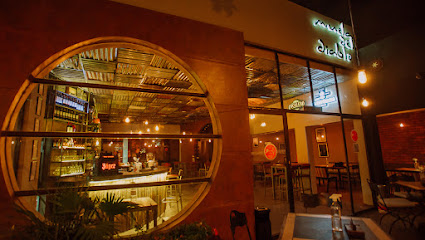
El Bosque de las Hadas
Experience the magical ambiance and delightful cuisine at El Bosque de las Hadas, Cochabamba's hidden gem for food lovers.
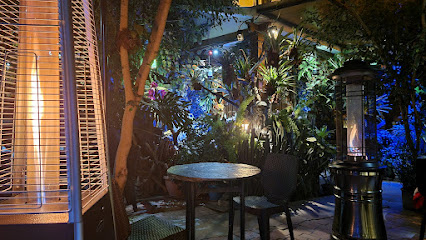
Las Moras Parrilla
Discover the authentic taste of Bolivian barbecue at Las Moras Parrilla in Cochabamba - where every bite tells a story.
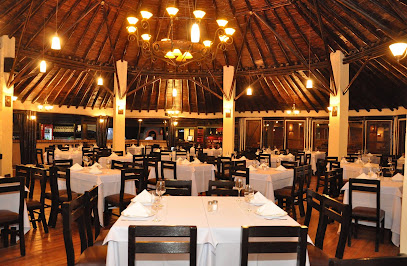
Kansas Grill & Bar
Savor the authentic Bolivian culinary experience at Kansas Grill & Bar in Cochabamba with diverse dishes and welcoming ambiance.
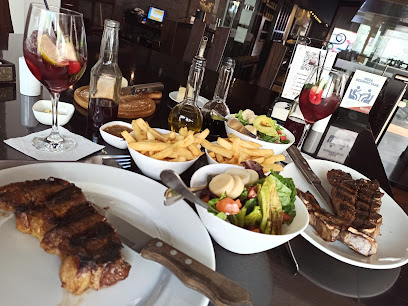
La Casa Del Gordo
Experience authentic Bolivian flavors at La Casa Del Gordo in Cochabamba – where tradition meets taste.
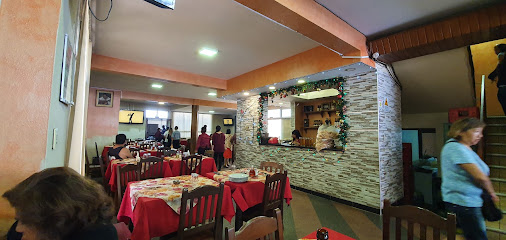
Bunker Grill & Bar
Discover the flavors of America at Bunker Grill & Bar in Cochabamba—where great food meets vibrant nightlife.
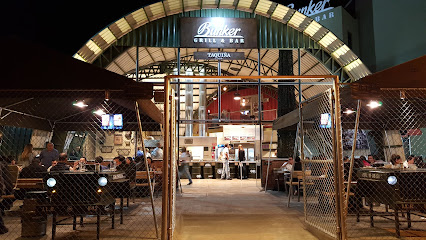
La Cantonata
Experience authentic Italian cuisine at La Cantonata in Cochabamba – where tradition meets flavor in every delicious bite.
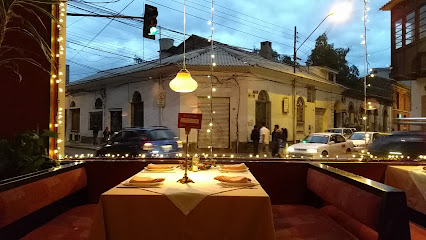
Tuesday
Discover the culinary delights of Tuesday in Cochabamba - where tradition meets innovation in every dish.
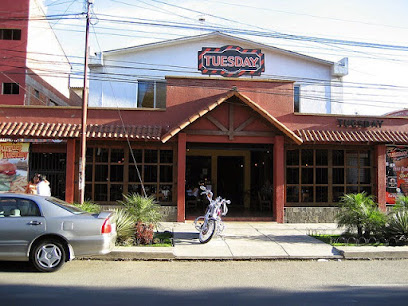
BURGERHAUS & CAFÉ
Experience delicious burgers and warm hospitality at Burgerhaus & Café in Cochabamba – where every meal is a celebration of flavors.
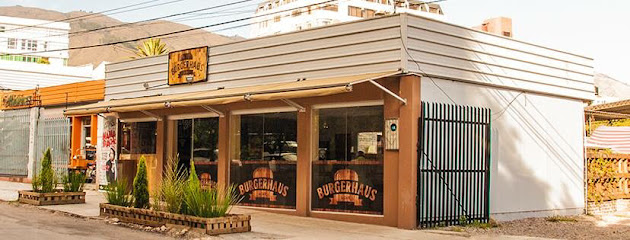
Churrasqueria BAGU
Experience authentic Bolivian barbecue at Churrasqueria BAGU in Cochabamba – a must-visit for meat lovers seeking local flavor.
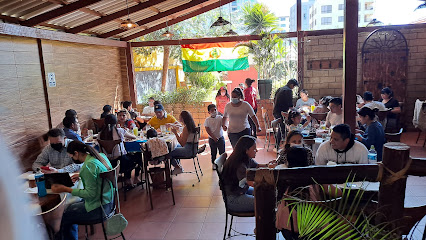
Factory Grill & Bar Cochabamba
Experience authentic American flavors at Factory Grill & Bar in Cochabamba – where every bite feels like home.
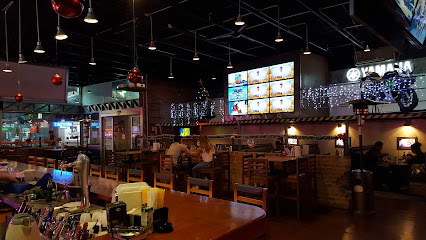
Los Patos
Experience authentic Bolivian cuisine at Los Patos in Cochabamba - a must-visit for food lovers seeking local flavors.
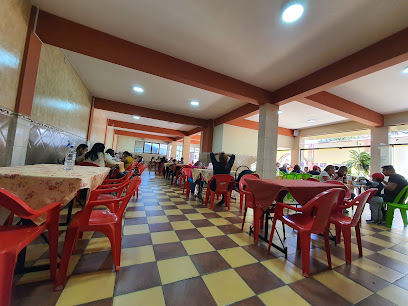
Markets, malls and hidden boutiques
Shopping Sucre
Discover the vibrant Shopping Sucre in Cochabamba - where Bolivian culture meets modern retail, dining, and entertainment options for all ages.
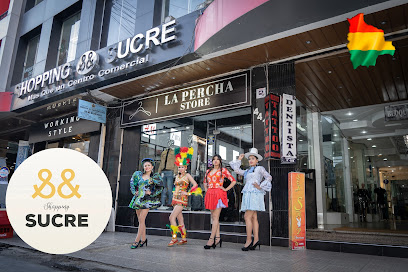
Regalo Express
Discover the charm of Bolivian craftsmanship at Regalo Express, the premier gift shop in Cochabamba for unique souvenirs and artisanal treasures.
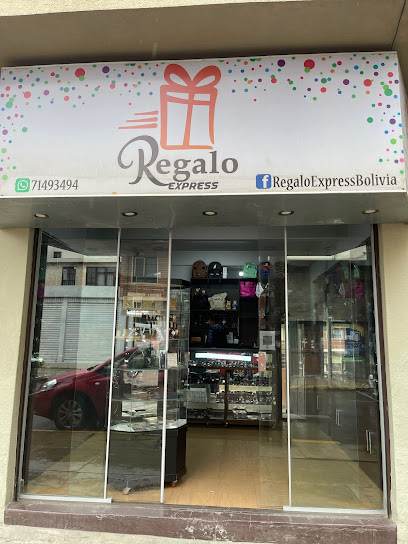
Surtiditos Bolivia
Discover the essence of Bolivia at Surtiditos Bolivia, your go-to gift shop for authentic handicrafts and unique souvenirs.
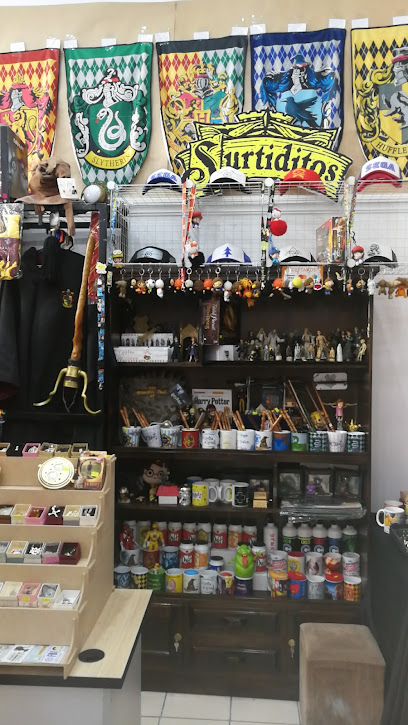
Shopping Venus
Discover the vibrant shopping culture of Cochabamba at Shopping Venus, your ultimate destination for retail therapy and local dining.
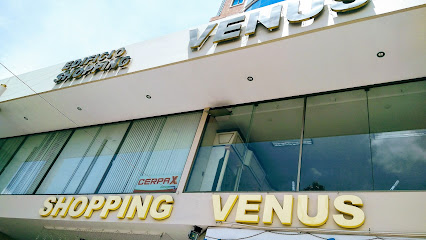
Tienda De Regalos HERGUT
Explore the essence of Bolivia at Tienda De Regalos HERGUT, a charming home goods store in Cochabamba, offering unique local crafts and treasures.
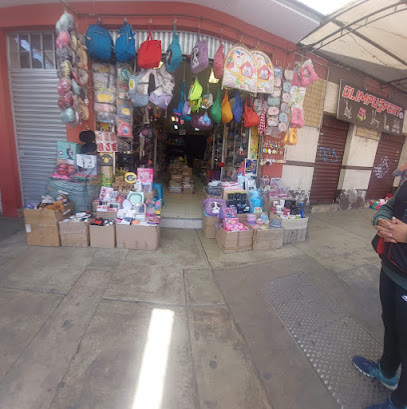
Gift Shop Cbba
Explore Gift Shop Cbba in Cochabamba for exquisite local crafts and unique souvenirs that capture the essence of Bolivia's rich culture.
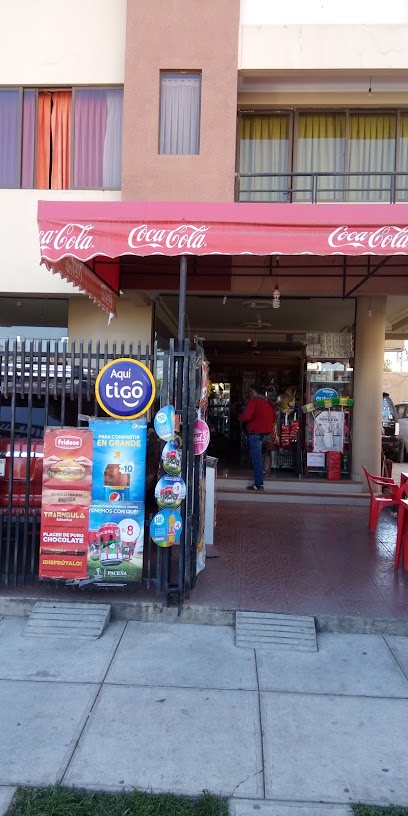
Mundo de Regalos DIANA
Explore the vibrant offerings of Mundo de Regalos DIANA, a home goods store in Cochabamba showcasing local craftsmanship and unique gifts.
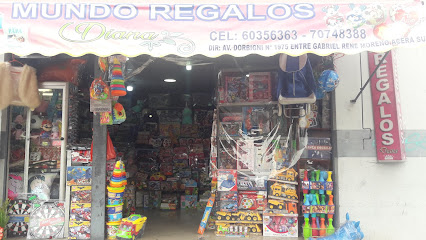
Concepto Store
Explore Concepto Store in Cochabamba for unique Bolivian crafts and artisanal treasures that embody local culture and creativity.
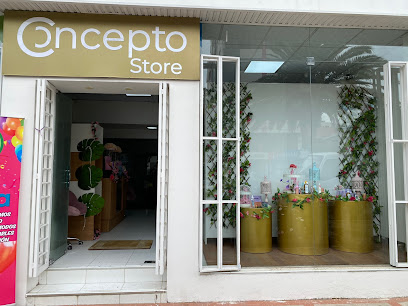
Lovely things,cajas personalizadas y arreglos florales Cochabamba
Explore a unique gift shop in Cochabamba, featuring personalized boxes and stunning floral arrangements that capture the essence of Bolivian artistry.

Boutique Telas Verito
Discover the rich cultural heritage of Bolivia at Boutique Telas Verito, where unique textiles and artisan crafts await every discerning traveler.
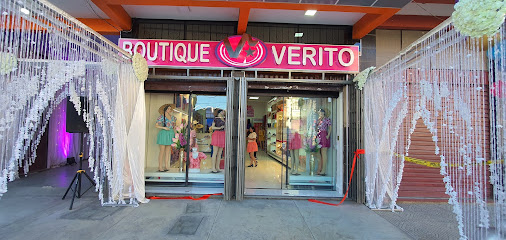
Calle Santa Cruz
Discover local fashion treasures and vibrant styles at Calle Santa Cruz, a unique clothing store in the heart of Cochabamba, Bolivia.
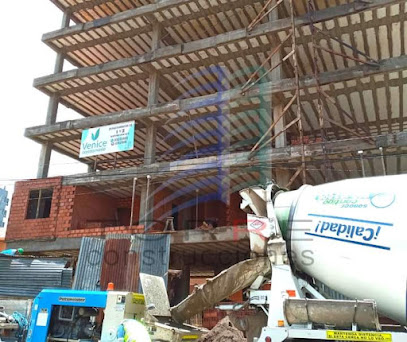
Importadora Isarmat
Explore the vibrant world of Bolivian craftsmanship at Importadora Isarmat, a must-visit gift shop in Cochabamba for unique souvenirs and local treasures.
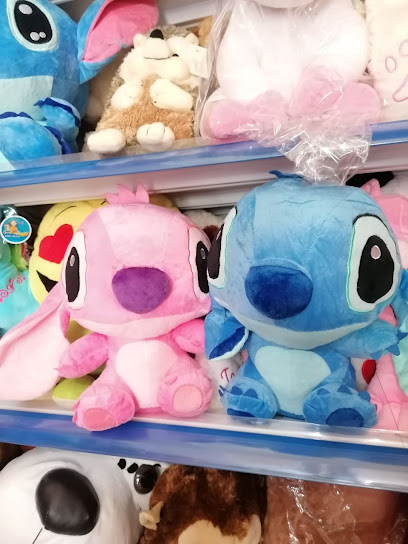
La Magia de los Cuarzos
Explore the magical world of crystals at La Magia de los Cuarzos, where nature's beauty meets cultural significance in every unique piece.

Amigurumis
Discover the magic of handmade amigurumi toys at Amigurumis in Cochabamba, where every piece tells a story of Bolivian artistry and culture.
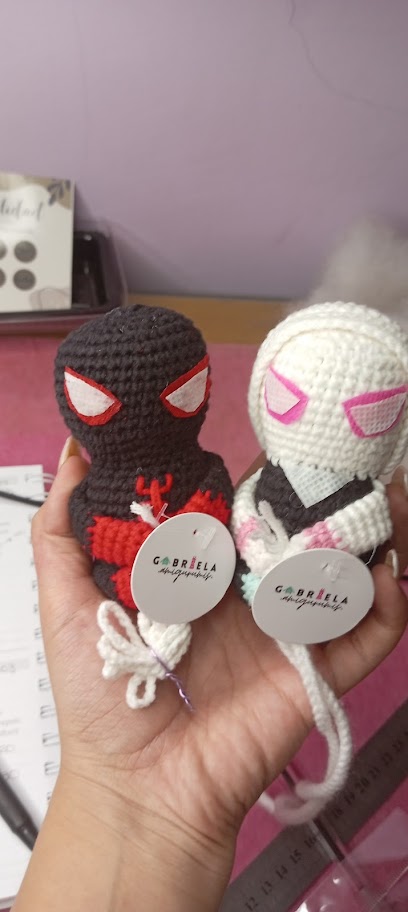
Las Rieles
Explore Las Rieles, a vibrant store in Cochabamba, where local craftsmanship meets modern retail for an unforgettable shopping experience.
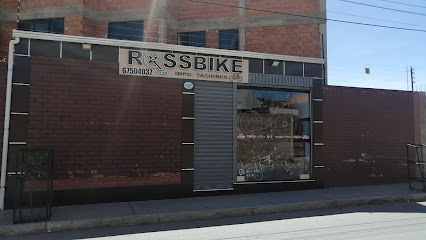
Essential bars & hidden hideouts
Muela del Diablo
Experience the vibrant flavors of Cochabamba at Muela del Diablo, a top grill and bar destination for food lovers.
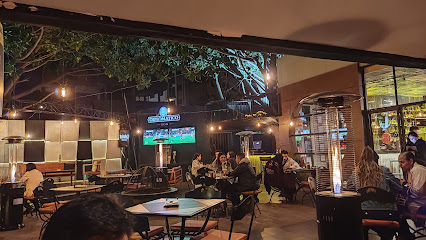
El Cortijo Pub
Discover Cochabamba's nightlife at El Cortijo Pub, a vibrant bar offering a diverse drink selection and a welcoming atmosphere.
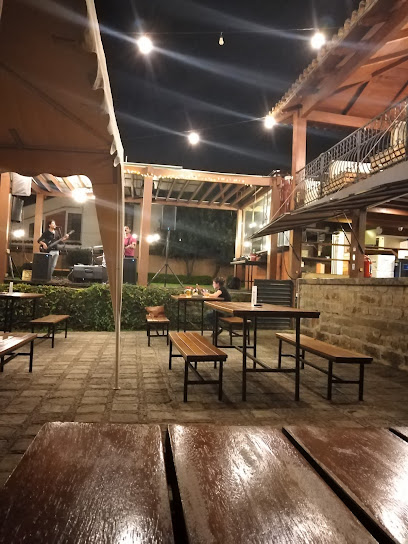
Mandarina Bar
Discover the vibrant nightlife and exquisite cocktails at Mandarina Bar in Cochabamba, a hotspot for locals and tourists alike.
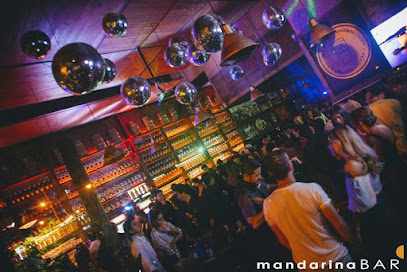
Valencia Bar
Discover the lively nightlife at Valencia Bar in Cochabamba, where cocktails flow and the dance floor awaits.
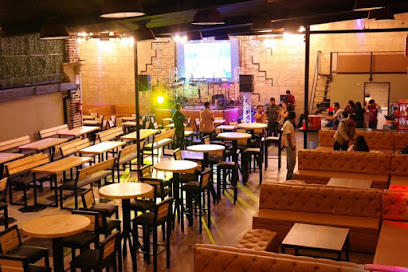
Brother's Irish Pub
Discover the charm of Brother's Irish Pub in Cochabamba, where Irish tradition meets Bolivian hospitality in a vibrant atmosphere.
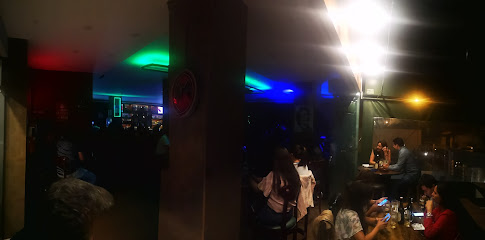
Martina Pub
Discover the lively atmosphere and exquisite tapas at Martina Pub, Cochabamba's favorite spot for food lovers and social gatherings.

Black Mount Pub
Discover the vibrant flavors of Cochabamba at Black Mount Pub, where delicious grilled dishes and a lively atmosphere await.
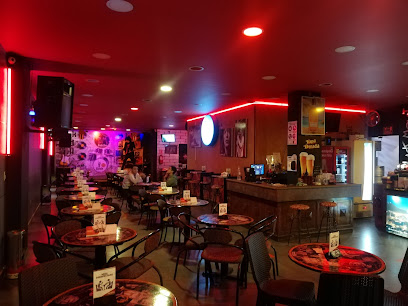
Jazz Stop Café Bar
Experience the vibrant nightlife of Cochabamba at Jazz Stop Café Bar, where live jazz meets delightful drinks for an unforgettable evening.
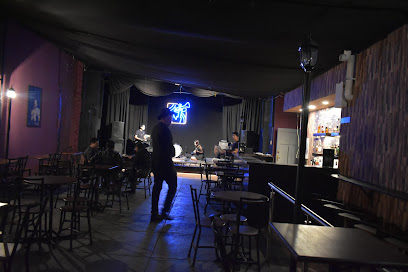
MANGOS Tropical Bar
Discover the vibrant MANGOS Tropical Bar in Cochabamba, where tropical drinks and lively ambiance create the perfect escape for tourists.
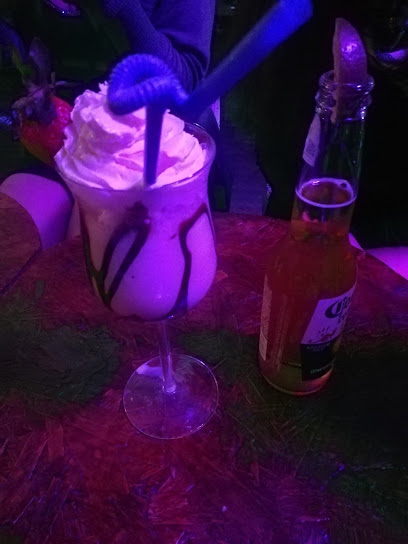
1969 Rock & Bar
Discover the lively 1969 Rock & Bar in Cochabamba, where great drinks and vibrant nightlife come together for an unforgettable experience.
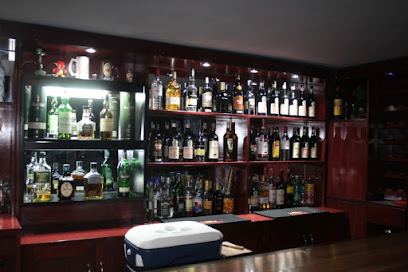
Liquid
Experience the vibrant nightlife of Cochabamba at Liquid, a lively bar offering a diverse drink selection and an inviting ambiance.

CHEERS
Discover Cochabamba's nightlife at Cheers, a vibrant bar offering a variety of drinks and a lively atmosphere for travelers and locals alike.
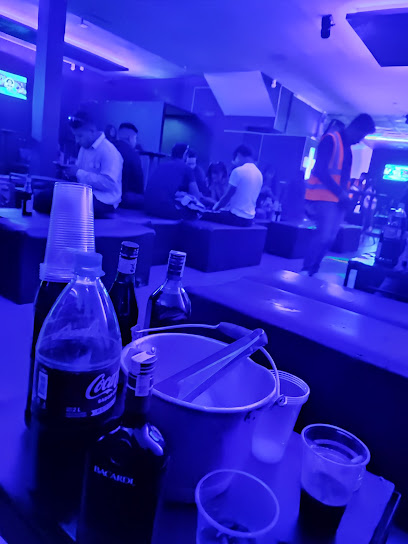
Cerebritos
Discover Cochabamba's nightlife at Cerebritos, a vibrant bar offering a great selection of drinks and live entertainment in a lively atmosphere.
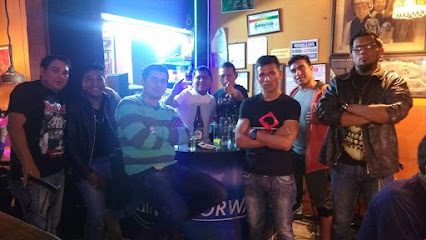
Breaking Bar-Cbba
Discover the lively spirit of Cochabamba at Breaking Bar-Cbba, where local culture meets a vibrant nightlife experience.
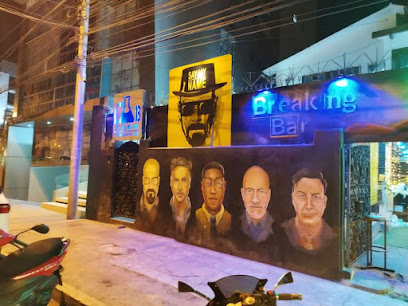
Alice Lounge Bar
Discover the lively atmosphere of Alice Lounge Bar in Cochabamba, where local culture meets vibrant nightlife and refreshing drinks await.
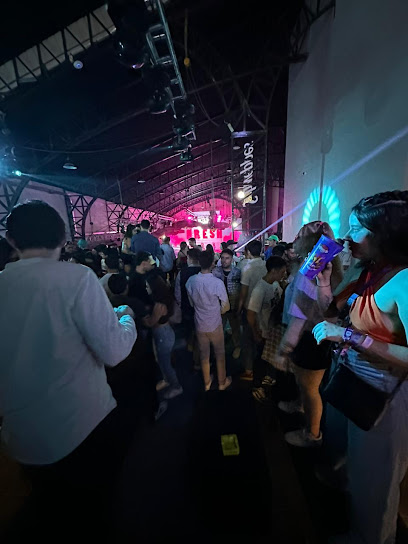
Local Phrases
-
- HelloHola
[Oh-la] - GoodbyeAdiós
[Ah-dee-ohs] - YesSí
[See] - NoNo
[Noh] - Please/You're welcomePor favor
[Por fah-vor] - Thank youGracias
[Grah-see-as] - Excuse me/SorryDisculpe
[Dees-kool-peh] - How are you?¿Cómo estás?
[Koh-moh es-tahs] - Fine. And you?Bien. ¿Y tú?
[Byen. Ee too] - Do you speak English?¿Hablas inglés?
[Ah-blahs een-gles] - I don't understandNo entiendo
[Noh en-tee-en-doh]
- HelloHola
-
- I'd like to see the menu, pleaseMe gustaría ver el menú, por favor
[Meh goo-stah-ree-ah ver el meh-noo, por fah-vor] - I don't eat meatNo como carne
[Noh koh-moh kahr-neh] - Cheers!¡Salud!
[Sah-lood] - I would like to pay, pleaseMe gustaría pagar, por favor
[Meh goo-stah-ree-ah pah-gar, por fah-vor]
- I'd like to see the menu, pleaseMe gustaría ver el menú, por favor
-
- Help!¡Ayuda!
[Ah-yoo-dah] - Go away!¡Vete!
[Veh-teh] - Call the Police!¡Llama a la Policía!
[Yah-mah ah lah Poh-lee-see-ah] - Call a doctor!¡Llama a un médico!
[Yah-mah ah oon meh-dee-koh] - I'm lostEstoy perdido
[Es-toy pehr-dee-doh] - I'm illEstoy enfermo
[Es-toy en-fehr-moh]
- Help!¡Ayuda!
-
- I'd like to buy...Me gustaría comprar...
[Meh goo-stah-ree-ah kohm-prar] - I'm just lookingSolo estoy mirando
[So-loh es-toy mee-ran-doh] - How much is it?¿Cuánto cuesta?
[Kwan-to kwehs-tah] - That's too expensiveEso es demasiado caro
[Eh-so es deh-mah-see-ah-doh kah-roh] - Can you lower the price?¿Puedes rebajar el precio?
[Pweh-dehs reh-bah-har el preh-see-oh]
- I'd like to buy...Me gustaría comprar...
-
- What time is it?¿Qué hora es?
[Keh oh-rah es] - It's one o'clockEs la una
[Es lah oo-nah] - Half past (10)Media (10)
[Meh-dee-ah (dies)] - MorningMañana
[Mah-nyah-nah] - AfternoonTarde
[Tahr-deh] - EveningNoche
[Noh-cheh] - YesterdayAyer
[Ah-yehr] - TodayHoy
[Oy] - TomorrowMañana
[Mah-nyah-nah] - 1Uno
[Oo-noh] - 2Dos
[Dohs] - 3Tres
[Tres] - 4Cuatro
[Kwah-troh] - 5Cinco
[Seen-koh] - 6Seis
[Sehs] - 7Siete
[Syeh-teh] - 8Ocho
[Oh-choh] - 9Nueve
[Nweh-veh] - 10Diez
[Dyehs]
- What time is it?¿Qué hora es?
-
- Where's a/the...?¿Dónde está...?
[Dohn-deh es-tah] - What's the address?¿Cuál es la dirección?
[Kwahl es lah dee-rek-syohn] - Can you show me (on the map)?¿Puedes mostrarme (en el mapa)?
[Pweh-dehs mohs-trar-meh (en el mah-pah)] - When's the next (bus)?¿Cuándo es el próximo (autobús)?
[Kwan-doh es el proh-ksee-moh (ow-toh-boos)] - A ticket (to ....)Un boleto (a ....)
[Oon boh-leh-toh (ah)]
- Where's a/the...?¿Dónde está...?
History of Cochabamba
-
Cochabamba was officially founded on August 15, 1571, by Sebastián Barba de Padilla under the orders of the Spanish Viceroy of Peru, Francisco Álvarez de Toledo. The city was named Villa de Oropeza in honor of the Viceroy's birthplace, but the indigenous name 'Cochabamba,' meaning 'plain of lakes,' eventually became more commonly used.
-
On September 14, 1810, Cochabamba played a pivotal role in Bolivia's fight for independence from Spanish colonial rule. Led by Esteban Arze, the revolutionaries captured the city and declared independence. This event was part of a larger wave of revolutionary movements sweeping across South America at the time.
-
Taking place on November 14, 1810, the Battle of Aroma was one of the significant conflicts during Bolivia's war of independence. Cochabamba's local militia, inspired by the earlier revolutionary fervor, fought valiantly against Spanish forces. Though ultimately a defeat, the battle demonstrated the region's commitment to the cause of independence.
-
From 1932 to 1935, Bolivia was embroiled in the Chaco War against Paraguay, a conflict over control of the Gran Chaco region. Cochabamba served as a critical supply and logistics hub for Bolivian troops. The war had a profound impact on the city's economy and social fabric, as many local men were conscripted to fight.
-
In April 2000, Cochabamba became internationally known for the Water War, a series of protests against the privatization of the city’s water supply. The privatization led to a dramatic increase in water prices, sparking widespread civil unrest. Ultimately, the government reversed the privatization, and the event became a symbol of popular resistance against neoliberal policies.
-
Standing at 40.44 meters tall, the Cristo de la Concordia statue is one of Cochabamba's most notable landmarks. Completed in 1994, the statue symbolizes peace and unity and offers panoramic views of the city. It is slightly taller than the famous Christ the Redeemer statue in Rio de Janeiro, Brazil, making it a point of local pride.
-
Cochabamba is deeply influenced by Quechua culture, which is evident in its language, traditions, and festivals. The city celebrates various Quechua festivals, such as Inti Raymi and Tinku, which highlight the rich cultural heritage of the indigenous people. These events are characterized by traditional music, dance, and vibrant costumes.
-
Known as the 'City of Eternal Spring,' Cochabamba is also famous for its diverse and delicious cuisine. The city’s food scene is a blend of indigenous and Spanish influences, with dishes like 'pique macho,' 'sillpancho,' and 'chicharrón' being local favorites. The city’s numerous markets and food stalls offer a culinary journey through Bolivian flavors.
Cochabamba Essentials
-
Cochabamba is centrally located in Bolivia and can be reached by air, bus, or car. The Jorge Wilstermann International Airport (CBB) is the main airport serving the city, with direct flights from major cities in Bolivia and some international destinations. Several bus companies operate routes to Cochabamba from cities like La Paz, Santa Cruz, and Sucre. The bus journey offers scenic views of the Andes and can take anywhere from 6 to 12 hours depending on the starting point and road conditions. If driving, the city is accessible via the major highways Ruta 4 and Ruta 7.
-
Cochabamba has a variety of transportation options for getting around the city. Taxis are plentiful and relatively inexpensive, but it is advisable to agree on a fare before starting your journey as meters are not always used. Public minibuses, known as 'trufis,' are another affordable and common mode of transport; they follow fixed routes and can be flagged down anywhere along the route. Additionally, app-based ride-sharing services like Uber are available. For short distances, walking is also a viable option, especially in the central areas.
-
The official currency in Bolivia is the Boliviano (BOB). Credit and debit cards are widely accepted in hotels, larger restaurants, and shops, but it's always a good idea to carry some cash for smaller establishments and markets. ATMs are readily available throughout Cochabamba, particularly in tourist areas and shopping centers. It's advisable to withdraw sufficient cash, especially if you plan to visit rural areas where ATMs may be scarce.
-
Cochabamba is generally a safe city for tourists, but like any urban area, it has its share of crime. Petty theft, such as pickpocketing, can occur in crowded areas like markets and public transport. It is recommended to avoid areas like the Cancha market after dark, as they have higher crime rates. Always stay vigilant, keep your belongings secure, and avoid displaying valuable items. Use registered taxis or ride-sharing services, especially at night.
-
In case of an emergency, dial 110 for police assistance and 118 for medical emergencies. The city has several hospitals and clinics, including the Viedma Hospital, which is the main public hospital. Pharmacies are widespread and can provide over-the-counter medications. It's recommended to have travel insurance that includes medical coverage. For consular assistance, contact your nearest embassy or consulate.
-
Fashion: Do dress modestly, especially when visiting religious sites or rural areas. Avoid wearing revealing clothing. Religion: Do respect local customs and traditions. When visiting churches, it's customary to dress modestly and speak quietly. Public Transport: Do be respectful and give up your seat to elderly passengers. Don't eat or drink on public transport. Greetings: Do greet people with a handshake. A friendly 'Buenos días' or 'Buenas tardes' is appreciated. Eating & Drinking: Do try local delicacies and accept food offerings graciously. Don't refuse hospitality, as it is considered impolite.
-
To experience Cochabamba like a local, visit the Cancha market, one of the largest open-air markets in South America, where you can buy everything from fresh produce to traditional Bolivian goods. Engage with locals, who are generally friendly and willing to share stories about the city's history and culture. Don't miss visiting the Cristo de la Concordia, the largest statue of Christ in the world, which offers panoramic views of the city. For a unique experience, take a stroll through the city’s many parks, such as Parque Mariscal Santa Cruz, and try the local cuisine at a 'chichería,' a traditional eatery.
Trending Landmark in Cochabamba
Nearby Cities to Cochabamba
-
Things To Do in Sucre
-
Things To Do in La Paz
-
Things To Do in Potosi
-
Things To Do in Santa Cruz de la Sierra
-
Things To Do in Copacabana
-
Things To Do in Uyuni
-
Things To Do in Tacna
-
Things To Do in Puno
-
Things To Do in Arica
-
Things To Do in Tarija
-
Things To Do in Iquique
-
Things To Do in Arequipa
-
Things To Do in San Pedro de Atacama
-
Things To Do in Cusco
-
Things To Do in Antofagasta

